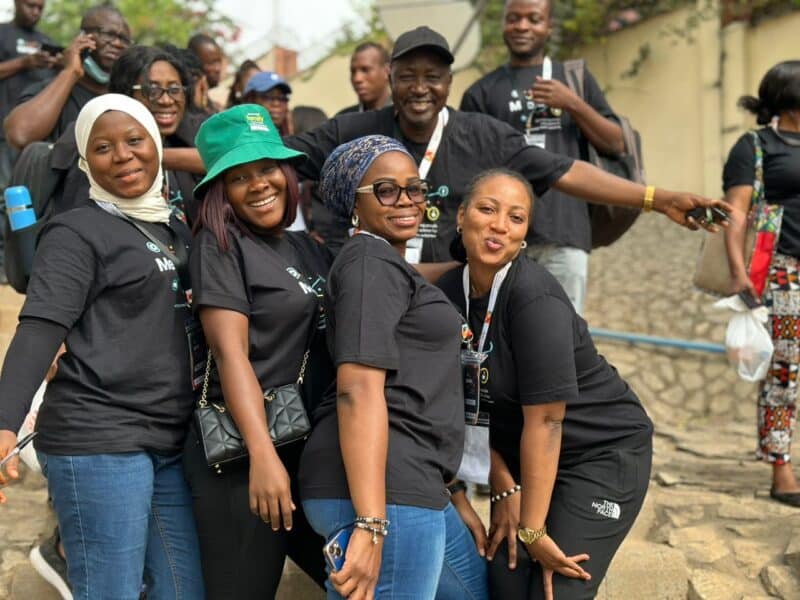As the highly contagious omicron variant of COVID-19 has spread across the United States since the first case was identified Dec. 1, a significantly higher percentage of Americans have sought testing for the virus, tested positive for the virus and say they are more concerned about getting sick.
The new data also reveal that many who are testing are doing so to ensure compliance with mandates from a school or an employer.
These findings come from the most recent data analyzed as part of the COVID Behaviors Dashboard, an interactive website project led by the Johns Hopkins Center for Communication Programs. Data from 114 countries and nearly 25 million participants around the world have been collected daily since May and are updated online every two weeks. It is believed to be the largest survey of global knowledge, attitudes and behaviors around COVID.
The dashboard is the product of a collaboration among CCP, the World Health Organization’s Global Outbreak Alert and Response Network and Facebook.
“What we are seeing is that there is this feeling that COVID-19 is everywhere and many more people are being tested to see if that sore throat or cough they have is a sign of something more serious,” says Marla Shaivitz, CCP’s director of digital strategy. “The number of people tested in the United States in December – particularly the last two weeks of December – mirrors what we had seen in the weeks prior in South Africa, where omicron was first identified. Not only did we find that more people are getting tested at higher rates, but there were more people testing positive.”
Says Doug Storey, PhD, CCP’s director of communication science and research: “This survey captures home testing data, a metric that local and state health departments likely don’t have access to. Data from this self-reported survey helps to round out a fuller picture of COVID behaviors – who is testing, why they are testing, and what cases aren’t being captured in official health systems data. It also provides insight into the motivators behind testing and the seriousness of the perceived threat.”
Since the pandemic began in March 2020, more than 5.5 million people across the globe have died from COVID-19, including nearly 850,000 Americans. The number of cases in the United States has shot up in the U.S. since Dec. 1, from the daily average of 86,550 cases to more than 803,000 cases in mid-January. Similar patterns are being seen around the world.
Analysis of the newest dashboard data finds that in June, 8.8 percent of respondents said they had been tested for COVID-19 in the U.S. By November, that was up to 14.7 percent and, by December, 19.2 percent. In the last two weeks of December alone 21.7 percent of American respondents reported being tested.
Testing rates in the United Kingdom soared to 55 percent of participants between Dec. 15 and 31, to 31 percent in the Democratic Republic of Congo, to 23 percent in Australia.
Many more participants are also reporting positive test results: In November, according to the data, the positivity rate in the U.S. was 12.6. Between Dec. 15 and 31, it was 18.3 percent.
Reported positivity rates have jumped at least 10 percentage points in South Africa, Mozambique and other countries in the past month.
South Africa, where the omicron variant was identified in late November, saw just 7 percent of respondents with positive tests between November 16 and 30. In the last two weeks of December, the percentage of people tested rose to 37 percent – a more than four-fold increase.
In the United States in December, the percent of vaccinated and unvaccinated getting tested were roughly the same (17 and 18 percent), but while vaccinated people tested positive 14 percent of the time, unvaccinated people tested positive 27 percent of the time. More women than men tested positive for COVID while those 18-34 were more likely than others to test positive than older age groups.
“Women may be more proactive about care-seeking compared to men, and the gender disparities we observe in the data may be driven by women proactively seeking out testing when experiencing COVID-19 symptoms,” says Greg Rosen, MSPH, a PhD candidate and data analyst for the dashboard project. “By comparison, men may have a higher propensity to delay testing until their symptoms become much more severe.”
Nearly one in four Americans reported they have already had COVID.
“One constant in the data is that while more people in the United States are testing positive overall, those numbers are much higher among the unvaccinated,” Storey says. “It’s a reminder that we need to continue encouraging people to get the vaccine to prevent serious illness or death.”
Positivity rates varied by state. In December, respondents from California, Oregon and Washington state reported positivity rates around 10 percent, while those in Midwestern states such as Ohio, Iowa and Indiana reported one positive test result for every four taken.





